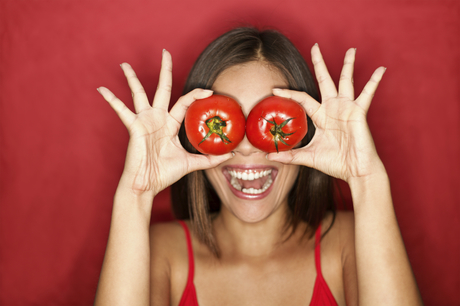Tomatoes will be tastier after a nice warm bath

It’s an oft-heard complaint that tomatoes aren’t as tasty as they used to be. But take heart, tastier tomatoes could soon be on their way, and the secret could be as simple as a nice warm bath.
The best-tasting tomatoes are eaten when ripe, straight from the farm gate or home vegetable patch. However, commercially sold tomatoes must be picked while still green, stored and transported to packers who use a gas called ethylene to trigger fruit ripening.
The tomatoes are then stored and shipped at low temperatures, but chilling tomatoes also degrades their flavour.
In an effort to improve the flavour quality, Jinhe Bai, PhD, and his team from the US Department of Agriculture, Agricultural Research Service, and the University of Florida developed a slightly different method. “To produce a better tasting tomato, we added a hot water pre-treatment step to the usual protocol that growers follow," he explains. “We found that this pretreatment step prevents flavour loss due to chilling."
Bai and his colleagues dipped Florida-grown green tomatoes in hot water (about 55°C) for five minutes and then let them cool at room temperature. Next they chilled the fruit to between 5 and 13°C, the temperatures commercial producers use for shipping. After the tomatoes fully ripened, the researchers tested them for flavour and aroma.
They found that tomatoes heated before chilling had higher levels of flavour compounds (6-methyl-5-hepten-2-one, 2-methylbutanal and 2-phenylethanol) than non-heated fruit, and they tasted better.
“Chilling suppresses production of oxygen, nitrogen and sulfur-containing heterocyclic compounds, ketones, alcohols and aldehydes, including 13 important aroma components of tomato flavour. But hot water-treated fruit actually produced higher concentrations of these important aroma contributors, even with subsequent chilling," explained Bai.
Currently, they are monitoring flavour compounds at additional time points — when the tomatoes are green, soon after the process is performed and when they are partially ripened. This information will be combined with data on fully ripened tomatoes to help the team develop a better commercial process.
Bai said that his team's approach is an easy, inexpensive fix to the flavour problem. Many post-harvest technologies sacrifice flavour to prevent bruising or spoiling, he pointed out, but the new methods can easily be implemented in the current commercial system without risking fruit decay.
The team has also tried alternative methods to hot water, such as incubating green tomatoes with methyl salicylate and picking the tomatoes at a later stage than growers usually do. Instead of picking them when they were all green, the researchers waited and collected them when the fruits were half-green and half-pink. Then they treated them with 1-methylcyclopropene to make the fruit more tolerant to cell death and deterioration at higher storage temperatures. Thus the chilling step was avoided and the flavour maintained.
The researchers plan to closely compare the flavour-saving qualities of all techniques, before approaching food processing firms to determine their interest.
The researchers presented the new flavour-saving methods at the 250th National Meeting & Exposition of the American Chemical Society (ACS).
Image credit: ©iStockphoto.com/ariwasabi
Six beverage trends predicted for 2026
Demand for customisation, 'protein-ification' and sustainable storytelling are some of...
Making UHT processing less intensive on energy
A nutritional beverages company was seeking a more sustainable way to produce UHT beverages using...
Tasty twist for chocolate alternatives
Food scientists develop two novel flavour-boosting techniques to transform carob pulp into a...











